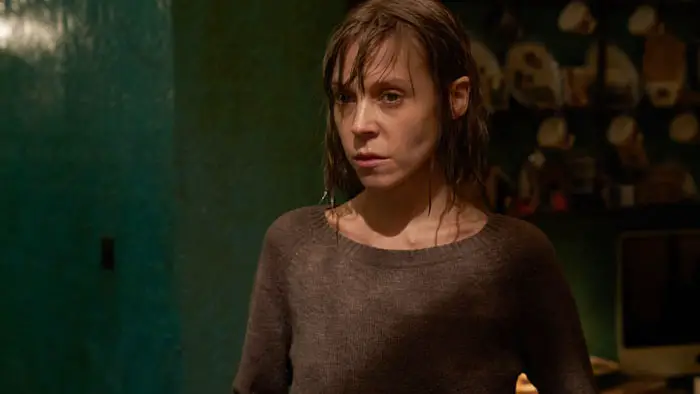
Cordelia, written by director Adrian Shergold and star Antonia Campbell-Hughes, opens with a scene in which we see a young girl waking from a bad dream in her bed. While she’s preparing for her morning routine, we hear the somber strings of a cello over the soundtrack. “Doesn’t that cello drive you mad?” her flatmate asks, motioning to the sound emerging from a neighboring apartment. It’s a subtle juxtaposition of reality that sets the film’s tone.
Cordelia (Campbell-Hughes) is a fragile woman who lives in a basement apartment with her twin sister, Caroline (Campbell-Hughes). Caroline serves as Cordelia’s caregiver following a past incident that dictates her every motion. As a result, Cordelia’s encounters with others are punctuated with awkwardness. She struggles to make even the slightest small-talk, her eyes almost hidden behind her bob of straight blonde hair. Each interaction is met with trepidation and nerves.
When Caroline abruptly announces that she and her boyfriend are taking a weekend away, Cordelia’s stricken with quiet panic, as she will now be left on her own. The thought of such only heightens her anxiety. “You’ve got to start living in this world,” her sister pleas. “You’ve got to start existing.” “Maybe I wasn’t meant to exist,” Cordelia quips.

“…Cordelia stumbles across pictures he’s taken of both her and Caroline from afar.”
Cordelia then picks up when Cordelia is approached by her cello-strumming neighbor, Frank (Johnny Flynn), who spotted her dining at a small cafe. Frank’s utterly charming, and it’s immediately evident that he has eyes for Cordelia. But before long, it seems that something’s a bit off. At least, that is what we perceive through Cordelia’s eyes. His gaze seldom leaves her, and he’s uncharacteristically forward. Upon meeting Frank for an after-work drink, Cordelia stumbles across pictures he’s taken of both her and Caroline from afar. During their meeting, Frank receives a call and suddenly exits the pub from the back, asking Cordelia to accompany him. All the while, she’s receiving a number of strange, menacing calls on her landline. Alone and frightened, she seeks the help of Frank, who, while trying to be reassuring, sets off some alarm bells with the viewers.
Divulging more would spoil the mounting dread Shergold so successfully builds. Directed with strength and conviction, the movie’s shot in 35mm with slow, subtle camera movements that focus on Campbell-Hughes and her every cautious movement. Each frame seems bled of any sharp colors, even in the most well-lit locales, enhancing Cordelia’s melancholy. The dramatic thriller is filled with ambiguity, both in character motives and the overall tone. We, as audience members, are not entirely sure just what we’re witnessing: is it a mental unraveling of a damaged woman? The manipulation of an opportunist creeper? A psycho-sexual powerplay between two damaged souls? At one point, Cordelia asks, “Am I safe with you, Frank?” To which he replies, “Am I safe with you?”
At a crisp 90 minutes, Cordelia is as enigmatic as its title character for the majority of its runtime. But with its lush cinematography, archaically creepy set design, and outstanding balancing acts from both Campbell-Hughes and Flynn, it’s never muddied to the point of being opaque and remains enthralling throughout. By its conclusion, the film offers no easy answers, as the ending will undoubtedly provoke conversation. Shergold and Campbell-Hughes have crafted a bold look at two desperately damaged souls that is not afraid to venture to darker places and refrain from pat Hollywood endings.

"…lush cinematography, archaically creepy set design, and outstanding balancing acts from both Campbell-Hughes and Flynn..."



[…] Source link […]